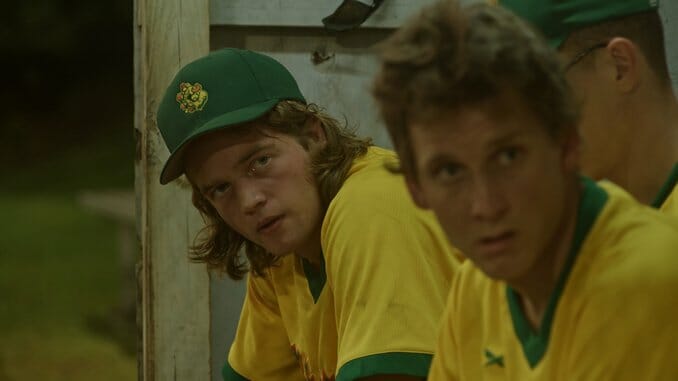Giants Being Lonely Is Artfully, Disturbingly Sparse

The all-American pastime of baseball has fueled a flock of coming-of-age films, from Richard Linklater’s Dazed and Confused and Everybody Wants Some!! to youth comedy staples like The Sandlot and Bad News Bears, not to mention Penny Marshall’s softball classic A League of Their Own. While Grear Patterson’s Giants Being Lonely follows two teammates on a varsity baseball team during their last season before graduation, the film’s overarching exploration has much more to do with power, abuse and psychological breaking points—a far cry from the comfort inherent in the aforementioned amateur league comedies.
First-time writer/director Patterson is no stranger to the realm of visual arts. His extensive body of work includes paintings and photographs that capture a kitschy Americana vibe, an aesthetic that is equally embedded in Giants Being Lonely. Languid images conveying the sticky, sweaty haze of North Carolina in June—and the equally hot and stifling sensation of precarious crushes—dominate much of the film, with some obligatory shots of running the diamond and a perfectly pitched game sprinkled in to up the competitive ante.
Giants Being Lonely is most comfortable when able to languorously amble through sun-soaked vignettes of teenagers darting through lush greenery or diving into the murky depths of local watering holes, with only a tenuous plot threading these scenes together. Bobby White (Jack Irving) is a talented pitcher and unofficial town golden boy, easily outshining every other player on his team including the coach’s son, Adam (played by Ben Irving, Jack’s brother). Both boys pine after classmate Caroline (Lily Gavin), a love triangle that blooms under the looming promise of prom night. The power-starved coach (Gabe Fazio) doesn’t confine his disparaging barks and aggressive attitude to the dugout, lashing out at home towards Adam in horrific ways while his mom (Amalia Culp) cowers with her head bowed.
-

-

-

-

-

-

-

-

-

-

-

-

-

-

-

-

-

-

-

-

-

-

-

-

-

-

-

-

-

-

-

-

-

-

-

-

-

-

-

-








































